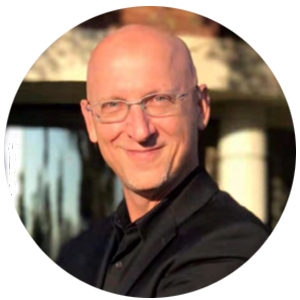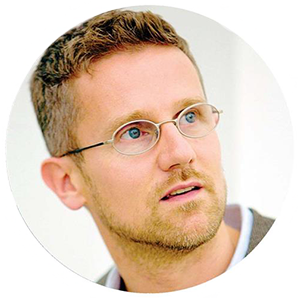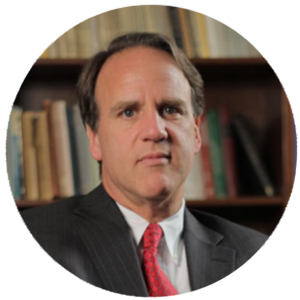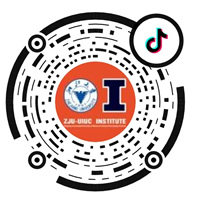CIRCLE Distinguished Lecture Series

|
Flourishing Systems: Transforming the future of our built environment through smarter information By Dr. Jennifer Schooling on July 26th, 2021. Recording: https://mediaspace.illinois.edu/media/t/1_gtz092ig |
|
|
ABSTRACT: Thanks to the digital revolution, we live in a world with an increasing abundance of data about every thing in our lives. In terms of the built environment, we are now able to digitally capture data about our buildings and infrastructure assets in a way which was not possible even 20 years ago. But the question remains, how to harness that data to best effect? Our built environment is composed of a complex system of infrastructure systems and buildings which underpin the services which we, their users, value. They are interconnected and inter-reliant. How can we use better data about these systems to help us provide and receive better services, which help our communities to flourish? How can we use that data to help us address the climate crisis and reinstate the balance between the built and natural environments? In this lecture, Dr Schooling will explore the answers to these questions, and describe how the Cambridge Centre for Smart Infrastructure has been working with colleagues from academia, industry and policy to enable the adoption and implementation of research outcomes into practice. |
 |
|
Smart City Digital Twins: Toward more sustainable, resilient, and livable cities By Dr. John E. Taylor on August 11th, 2021. Recording: https://mediaspace.illinois.edu/media/t/1_h2z41171 |
|
|
ABSTRACT: Recent reports by the National Academies have encouraged investment in developing a more comprehensive understanding of network dynamics at the intersection between human and engineered networks. Concurrently, cities are addressing rapid urbanization challenges by implementing socio-technological changes in their infrastructure systems as they evolve toward becoming smarter cities. The success of such an evolution, however, relies on solutions that can combine data from individual infrastructure components to urban scale networks. A great deal of research has focused on developing an understanding of data analytics at the scale of the city and of individual infrastructure components. However, there is a gap in our understanding, data collection approaches, and analytical methods to integrate and visualize such disparate data and complex network dynamics. This presentation will describe efforts to formalize and implement a Smart City Digital Twin platform, with an emphasis on efforts to understand, model, and improve energy consumption and disaster mobility across spatial scales in cities, to foster more sustainable, resilient, and livable cities. |
 |
|
Senseable Cities By Dr. Carlo Ratti on October 14th, 2021. Recording: https://mediaspace.illinois.edu/media/t/1_daz3w85r |
|
|
ABSTRACT: The way we live, work, and play is very different today than it was just a few decades ago, thanks in large part to a network of connectivity that now encompasses most people on the planet. In a similar way, today we are at the beginning of a new technological revolution: the Internet is entering the physical space– the traditional domain of architecture and design – becoming an “Internet of Things” or IoT. As such, it is opening the door to a variety of applications that – in a similar way to what happened with the first wave of the Internet – can encompass many domains: from production to citizen participation, from energy to mobility to public hygiene, all of which requiring new insights due to the changes brought forth by the ongoing COVID-19 pandemic. The contribution from Prof. Carlo Ratti will address these issues from a critical point of view through projects by the Senseable City Laboratory, a research initiative at the Massachusetts Institute of Technology, and the design office Carlo Ratti Associati. |
 |
|
The Architectural, Engineering, and Construction Industry and the Fourth Industrial Revolution By Prof. Lucio Soibelmanon Nov 3, 2021. Recording: https://mediaspace.illinois.edu/media/t/1_sheqk1dq |
|
|
ABSTRACT: The architectural, engineering, and construction industry is responsible for the design construction, operation, and decommission of buildings and other facilities, transportation infrastructure, telecommunication networks, the power grid, water distribution and wastewater collection systems among many other important and complex systems. Those systems will require more and more that engineers provide a continuous state awareness, assessment and proactive decision making for the complete life cycle of the systems and the processes it creates. Today, during the current 4th industrial revolution, a new group of available digital technologies are allowing us to blur the lines between the physical and digital world creating opportunities for the development of tools that will allow continuous state awareness and proactive decision making to manage buildings and infrastructure systems in both normal and abnormal conditions more eciently and effectively. There are many technological developments and research projects that already support, or begin to support this vision. Civil Engineers, not just electrical and computer engineers and computer scientists can and should be involved in delivering this overall vision. At this talk professor Soibelman will introduce his vision and work developed within his research group that focus on the application and exploration of emerging Information and Communication Technologies, big data concepts, smart buildings, smart infrastructure systems, machine learning, and artificial intelligence to a broadly defined set of infrastructure systems and associated processes, such as planning, design, construction, facility/infrastructure management, and environmental monitoring, so as to improve their sustainability, effciency, maintainability, durability, and the overall performance of these systems. |
 |
|
Planning, Design, Modelling, Simulation and Visualisation Platform for Sustainable Cities byDr. Washington Ochieng December 6, 2021 Recording: https://mediaspace.illinois.edu/media/t/1_ktia48vw |
|
|
Abstract:Cities around the world are under immense pressure from various economic, social and environmental challenges. In many cities, the population is predicted to grow significantly over the next decades. This will not only intensify the struggle to find space for residential, commercial and public use but also put additional strain on already congested and ageing infrastructure systems. At the same time, new technological innovations are emerging on the horizon, for example, connected and autonomous vehicles. In order to address these challenges, Professor Ochieng will explore the need for a parametric platform for integrated planning, design and visualisation of sustainable smart cities. |
 |
|
Convergence of Engineering, Science, and Sociology for Equitable Solutions to Environmental Problems by Dr. Lila Abron Jan 26, 2022 Recording: https://mediaspace.illinois.edu/media/t/1_grjnrzpy |
|
|
Abstract: Environmental engineers combine environmental science methods, engineering principles, and sociological theories/paradigms to prevent, control,and mitigate hazards and to implement public policy initiatives that impact public health and the environment. This convergence of disciplines, thoughts, and practices requires environmental engineers to practice holistic thinking — incorporating engineering,science, medicine, and sociology in the practice of the profession. Thus, environmental engineers have learned to be collaborative by reaching out to other disciplines for support, advice, and guidance. They have become curious individuals that talk to others, ask questions, listen, and observe the situationrst to identify the right problem and subsequently to and a solution to the environmental problem that is transformative, sustainable, technically appropriate, financially viable, and acceptable to and by the community it (directly) impacts. The COVID-19 pandemic disproportionately impacted developing countries worldwide and minority and poor communities in the U.S. The CDC reports that race and ethnicity are risk markers for other underlying conditions that affect health, including socioeconomic status, access to health care, and exposure to the virus based on one’s occupation, e.g., frontline, essential and critical infrastructure workers – a metaphor for low-wage workers who are mostly women and people of color. The COVID-19 death toll was unusually high among essential workers and their families. Environmental engineers should have been at the forefront of educating, communicating and visibly demonstrating to the public and this at-risk population the need for the intentional use of a variety of preventive measures that are economical, effective, and easy to obtain and implement. These measures – such as proper sanitation, frequent handwashing with soap (especially after contact with the ill), covering the mouth when coughing, and maintaining proper (social) distance – are proven measures that stop the spread of infectious diseases while curative measures become available, if and as needed. Undeterred, environmental engineers quickly pivoted to identifying ways of tracking the virus in the air and water; based on that information, they developed technologies and practices to mitigate its impacts in the built environment. This lecture discusses examples of solutions to environmental problems worldwide, where “convergence and human engineering” identified the right problem of the human environment to solve and project beneficiaries were paramount to the decision-making process. |
 |
|
A Roadmap for Physical Artificial Intelligence in Civil Engineering by Dr. Hui Li Feb 14. 2022 Recording: https://mediaspace.illinois.edu/media/t/1_3htl01zs |
|
|
Abstract: Civil engineering deals with all aspects of design, construction, and maintenance of the physical and natural built environment. The discipline has a long history and is often viewed as relatively traditional. The concept of intelligent civil engineering systems was first introduced at the end of 1970s, associated with structural vibration control. In the early 1990s, smart sensing and health monitoring technologies as well as smart material-based control strategies emerged, becoming known as the second stage of intelligence in civil engineering. In more recent years, artificial intelligence (AI) has emerged from the field of computer science to become a focus of research and development in many fields, including civil engineering. In contrast with AI focusing only on data analysis, the application of AI in the natural sciences and engineering must also respect intrinsic physical laws, which is termed “Physical Artificial Intelligence (PAI)”, though some scholars prefer “AI for science”. In this lecture, the basic concepts underlying PAI in civil engineering are introduced. Then, the revolutionary changes catalyzed by PAI in the theory and technology of civil engineering are discussed, covering issues such as architectural design, structural and material design, structural analysis and mechanics, solution of the complex governing equations, construction, maintenance and operation, and disaster risk management. Finally, the presentation looks toward the future of civil engineering research and applications in an intelligent societal setting. |
 |








